16. "Alte Kellerei"
Presumably built in the 15th century
In the crest coat of arms of Jakob I.
von Sierck (1439-1456). This building
used to be the seat of the financial
administration of the Archbishops.
Right up to the 17th century, the ""Alte Kellerei"s” used to be situated at the location of the house with the crest of the archbishop James I. of Sierck (1439-1456), spanning the following three houses. The crest unites the Cross of Trier with the pilgrim mussel in the crest of the Sierck house. The revenues from the archbishop's estates and rights were collected and administrated in the cellar. The estate remained in the territorial lord’s possession until 1654. After the sale and repeated destruction, the present-day building was erected after 1691.
The building we are standing in front of was built after the city was pillaged by the soldiers of Louis XIV in 1689 and 1691. It stands on the foundations of the "Alte Kellerei", which extended along Obertorstraße for the next 3 houses.
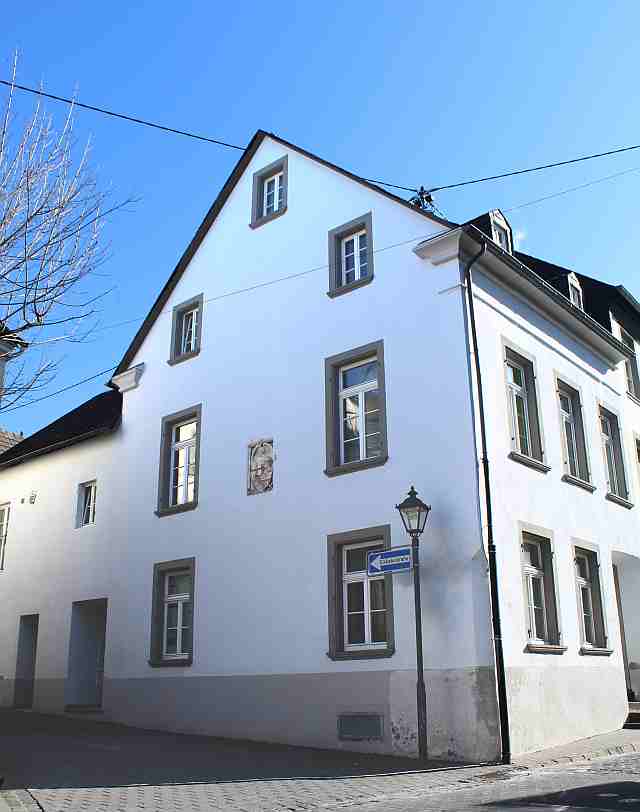
The coat of arms in the gable shows the Trier Cross twice and three scallops from the coat of arms of the Lords of Sierck twice. Their ancestral seat was Sierck Castle in Lorraine.

When the French Revolutionary troops entered Münstermaifeld on 18 October 1794, the owner of the corner house at the time, the baker Johann Adams, had the lordly coat of arms smeared over so that it escaped the destruction of the symbols of the old lordship. Jakob I von Sierck, who had the cellar rebuilt, was only appointed archbishop at the second attempt. In the first election in 1430, he received the majority of the votes of the cathedral chapter, but the defeated opposing candidate Ulrich von Manderscheid refused to recognise the election.
As a result, Pope Martin V (1417-1431) appointed Rhaban von Helmstätt, Bishop of Speyr, as Archbishop of Trier (1430-1439). Jakob von Sierck renounced in return for an annual pension of 2000 gulden. His opponent tried to enforce his appointment by force of arms and only gave up in 1436, shortly before his death.
This dispute brought the archbishopric to the brink of ruin. The reconstruction of the destroyed cellar was therefore an urgent concern of the archbishop. Jakob I von Sierck had to deal with four popes and one antipope during his term of office, which was entirely accompanied by the Council of Basel (1431-1459). Pope Eugene IV (1431 - 1447) was important for Münstermaifeld,
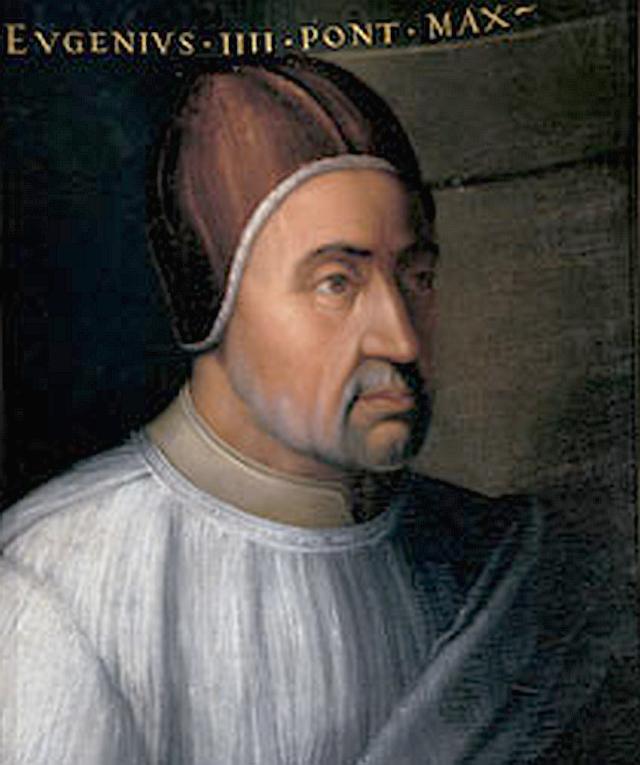
who not only confirmed Jacob I as archbishop, but also supported the takeover of the provostship by Nicholas of Cusa in 1435.
The archbishop
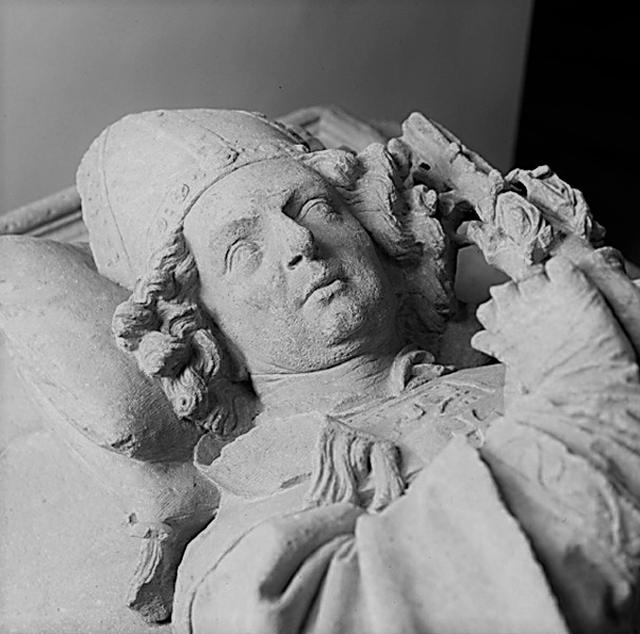
and Nicholas of Cusa
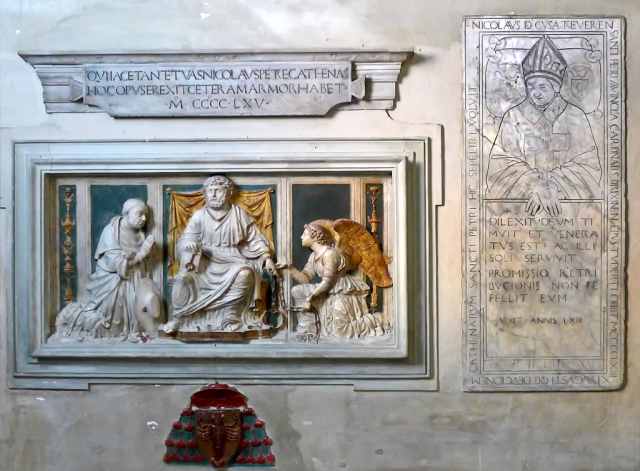
confirmed the 1427 statutes for the monastery in Münstermaifeld in 1449. These statutes reaffirmed the need for strict discipline. Nikolaus von Kues was succeeded as provost in 1445 by the archbishop's brother, Philipp von Sierck. Thus the archbishop continued to be closely connected with the monastery. The penultimate provost from 1471 to 1477 or 1484 was a man with a great name. Giuliano della Rovere. He reigned as Pope Julius II from 1503 to 1513. His uncle Sixtus IV. (1471-1484) had appointed him on 28 August 1471 to succeed Provost Heinrich Dalmann, who had just died. With this, Sixtus IV began a successful policy of providing for his family, only 3 weeks after his election as Pope. On 18.09. 1471 he promoted his nephew to cardinal priest with the title church of San Pietro in Vincoli, a dignity the nephew took over from him. He himself had followed Nicholas of Cusa, who held this title from 1448 until his death in 1464. In the church are the tomb of Pope Julius II, sculpted by Michelangelo, and the epitaph of Nicholas of Cusa. Thus, two men who entered the history books and bore the title of provost of the monastery in Münstermaifeld are remembered in Rome.
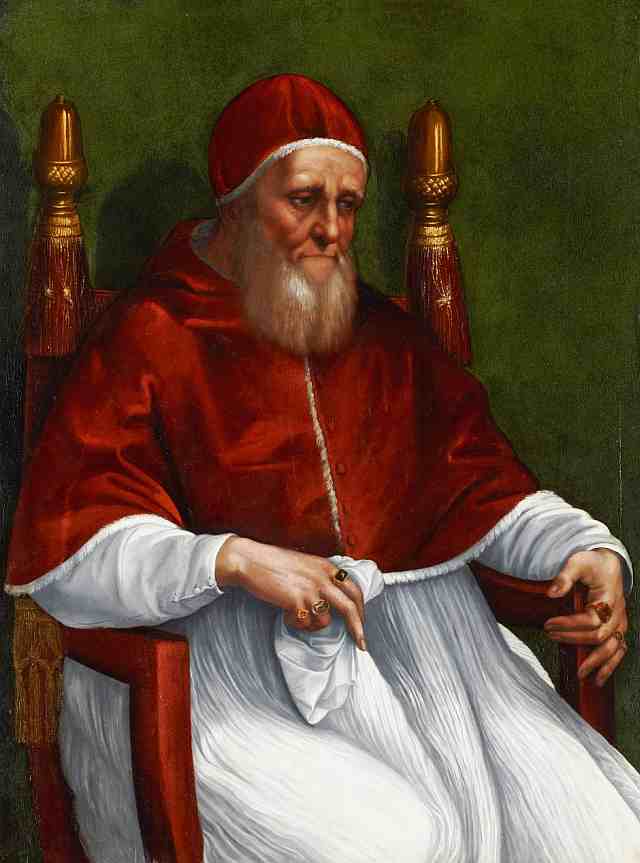

While we know of Nicholas of Cusa, who probably held 30 different benefices in his life, that he stayed in Münstermaifeld several times, the later Pope certainly never saw Münstermaifeld. During the time of his disposal of the title and prebend of a provost, he officiated as bishop of 10 different bishoprics in Italy. The lucrative benefice went to the Archbishops of Trier in 1515 with Richard von Greiffenklau in personal union.
Glossary
Pope Eugene IV
He reigned from 1431 to 1447 and his entire reign was dominated by the struggle for papal authority. In the end he was able to enforce the independence of papal decisions from decisions of the councils. Archbishop Jakob I von Sierck and also Nikolaus von Kues, the provost of the monastery in Münstermaifeld, had changed sides in this conflict and supported the Pope.
Nicholas of Cusa
Nicholas of Cusa, Latinised Nicolaus Cusanus, born in Cusa in 1401, died in Todi, Umbria, in 1464, was already famous during his lifetime for his all-round and comprehensive education. In church politics, Nicolaus played a significant role, especially in the disputes over church reform. At the Council of Basel, he was initially on the side of the majority of the Council participants, who demanded a limitation of the Pope's powers. Later, however, he switched to the victorious papal camp. He campaigned vigorously for papal interests, showed diplomatic skill and had a glittering career as a cardinal, papal legate, prince-bishop of Brixen and vicar-general in the Papal States. Against this background, his two terms as provost in Münstermaifeld, with rare presences, are an ornament for the monastery, rather an episode for him. Before Nicholas, 3 cardinals had already been able to use the provost's office as a place of provision in the 14th century. These were Pastor de Serrats (1351-1355), Stefano Palosio (1392) and Petrus Corsinus (1379-1382). All three were in the service of the Holy See in Avignon and, like Nicholas of Cusa, proved themselves in diplomatic missions.
Richard of Greiffenklau
Archbishop and Elector of Trier 1511-1531. The provostship was conferred on him by the Pope in 1515. Since then, the archbishop has also been provost of the monastery. His reign was dominated by the confrontation with Luther and the emerging schism.
Council of Basel
The Council of Basel (1431-1449) was intended to reform the Church, to advance the fight against heretics and to clarify relations with the Church of Byzantium. Conflicts between the Pope and the Council Fathers in 1437 led to the separation of the meeting places Basel and Ferrara/Florence.
Pope Martin V.
At the Council of Constance (1414-1418), Oddo di Colonna was elected pope (1417-1431) as Martin V. He was the first pope to be elected. With him the Western schism ended. The Council had previously deposed the competing popes John XXIII in Pisa, Gregory XII in Genoa and Benedict XIII in Avignon.
Rovere della, Giuliano
As Pope Julius II he reigned 1503-1513. In 1506 he founded the papal bodyguard, the Swiss Guard. On 18 April 1506, he began the construction of St Peter's Basilica, with the intention of building the largest and most magnificent church in the world. Martin Luther called him a "blood drunkard" because of the many wars he led.
Provost
The provost represented the monastery to the outside world. He was supposed to defend the rights, goods and income of the monastery and preside over the tribunal. The provost had his own rights, duties and income vis-à-vis the chapter. Until 1515 he was elected by the chapter and confirmed by the archbishop. Papal recommendations were often decisive for filling the office. After 1515, the office of provost was another dignity and source of income for the archbishop of Trier.



